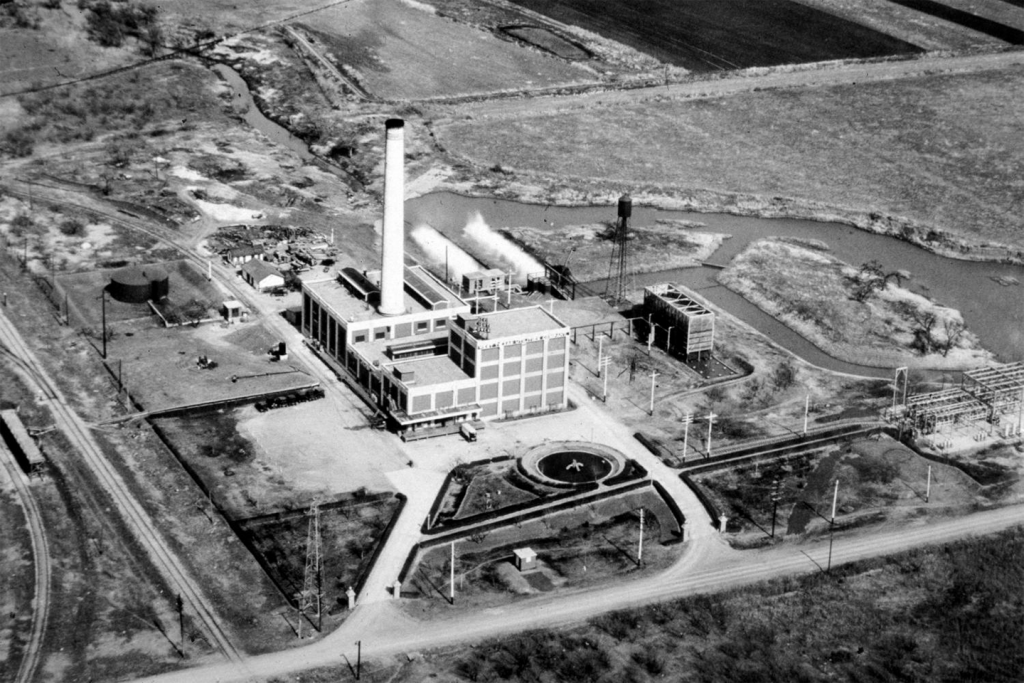If you drive over the Martin Luther King Jr. Bridge on Highway 80, you can’t miss the iconic smokestack of the West Texas Utility (WTU) powerplant. It often leads people to wonder what it was and what it could become.
The nonprofit Abilene Preservation League (APL) advocated that the historic building should transition into something of value and not just be written off as another derelict building. Josh Black, executive director of APL, negotiated with the WTU owner to transfer the property so it can be protected. American Electric Power (AEP) ended its search to find a buyer and asked the APL to take on that preservation role. Now the APL is working to create an adaptive reuse destination to benefit the whole community.
 Built in 1920, it was designed to house the city’s future electrical needs. “The old WTU Power & Ice Plant,” as it is known in the National Register of Historic Places designation, is a brick and reinforced concrete structure. The huge tilt-and-turn and pivot metal windows allow incredible natural light to fill the enormous spaces and can open to vent the area with fresh air when desired.
Built in 1920, it was designed to house the city’s future electrical needs. “The old WTU Power & Ice Plant,” as it is known in the National Register of Historic Places designation, is a brick and reinforced concrete structure. The huge tilt-and-turn and pivot metal windows allow incredible natural light to fill the enormous spaces and can open to vent the area with fresh air when desired.
The 182-foot smokestack, with its brightly painted WTU lettering, welcomed generations of employees to work each day to deliver uninterrupted power to the region. Ice storage and deliveries changed the dynamic of kitchens and that of commerce for the growing grocery industry. The 1940s additions repeated the motif with more modern materials and natural light. The increased turbine capacity helped to develop the city as an energy corridor for progress. The “newer” areas are lined with subway tiles and exposed painted metal girders. This made industrial work more ergonomic back then, but creates an open and inviting viewing experience today.
 Although any effort to transform this industrial complex will take years of planning and preparation, the APL, through its subsidiary, is building a program to preserve this landmark and repurpose it.
Although any effort to transform this industrial complex will take years of planning and preparation, the APL, through its subsidiary, is building a program to preserve this landmark and repurpose it.
There is a great shortage of skilled craftspeople, especially in the preservation trades. The APL is looking to create a workshop open to all area intuitions of higher learning where students can work with and learn skills important to maintaining historic structures. Many trades are difficult to conduct or require tailored spaces not currently available. The industrial nature of the WTU building gives designers room to build and grow programs specific to the local preservation needs.
The APL cleaned up damaged and vandalized areas of the building and protected files and historic materials found inside. Generous grants and gifts from foundations and individuals helped these efforts. Structural assessments and repair of vandalism, is an ongoing issue. Surveillance systems have been installed and police patrols are helping discontinue further destruction.
The WTU property sits along Cedar Creek across from the recent addition of Cedar Creek bike, hike and walk trail. The APL hopes to garner enough interest in the site to add more offerings beyond the preservation trades. The interesting and lofty architecture should welcome many other ideas for a mixed-use facility.

Contributed By The Abilene Preservation League
























Leave a Reply